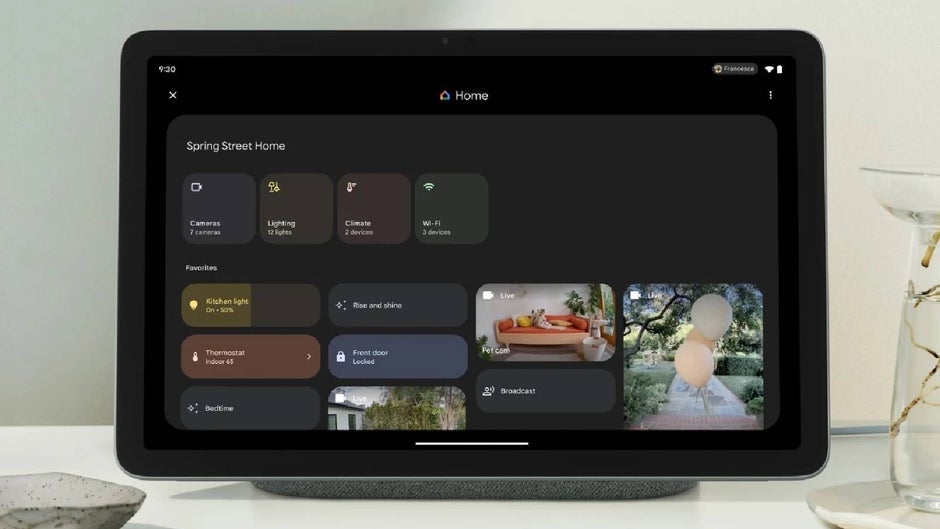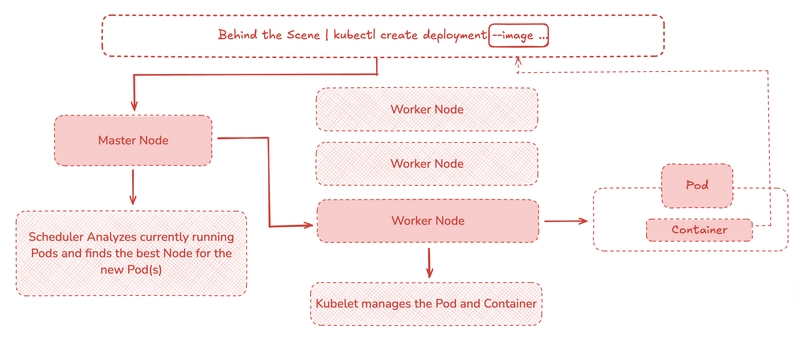Option Pattern in Go: Advanced Parameter Handling
In Go, the Option pattern (also known as the configuration pattern or constructor pattern) is a commonly used design pattern, primarily for handling function parameters, especially when a function has many optional parameters. By using the Option pattern, we can pass and configure function parameters in a flexible and extensible way, avoiding the maintenance challenges and complexity of traditional methods with too many parameters. Let’s take a look at how the Option pattern is used in Go, analyze its implementation principles, and help you better understand how to apply this pattern in real-world projects. Why Do We Need the Option Pattern? When constructing complex objects in Go, we often encounter the following pain points: Drawbacks of Traditional Constructors // Example problem: Parameter explosion and difficult maintenance func NewServer(addr string, port int, timeout time.Duration, maxConn int, protocol string) *Server { // ... } Pain point analysis: The order of parameters is sensitive Cannot set default values Adding parameters requires modifying all callers Poor readability (hard to distinguish whether 0 is a valid value or a default) So, how can we solve or avoid these problems? Core Concept of the Option Pattern The core of the Option pattern is to set the configuration of an object or function through optional function parameters, instead of putting all the configuration items in the function’s parameter list. These functions are usually called “Options”, and by combining multiple options, you can complete complex configurations. By using function closures and variadic parameters, you can flexibly configure objects: Constructor -> Accepts a list of Option functions -> Applies default configuration -> Iterates and executes Option functions -> Returns the fully configured object Basic Implementation Approach Let’s illustrate how to use the Option pattern to simplify configuration and parameter passing by creating a server client. Define a Configuration Struct type Server struct { addr string port int timeout time.Duration maxConn int protocol string } type Option func(*Server) Implement Option Functions func WithTimeout(t time.Duration) Option { return func(s *Server) { s.timeout = t } } func WithMaxConn(max int) Option { return func(s *Server) { s.maxConn = max } } Implement the Constructor Function func NewServer(addr string, opts ...Option) *Server { s := &Server{ addr: addr, port: 8080, // default port timeout: 30 * time.Second, maxConn: 100, protocol: "tcp", } for _, opt := range opts { opt(s) // apply all Option functions } return s } Usage Example server := NewServer("localhost", WithTimeout(60*time.Second), WithMaxConn(500), ) Advanced Optimization Techniques Configuration Validation // If the port is less than 0 or greater than 65535, show an error func WithPort(port int) Option { return func(s *Server) { if port 65535 { panic("invalid port number") } s.port = port } } Grouped Configuration type NetworkOptions struct { Protocol string Timeout time.Duration } func WithNetworkOptions(opts NetworkOptions) Option { return func(s *Server) { s.protocol = opts.Protocol s.timeout = opts.Timeout } } // Using grouped configuration server := NewServer("localhost", WithNetworkOptions(NetworkOptions{ Protocol: "udp", Timeout: 10*time.Second, }), ) Comparison with Traditional Patterns Initialization scenario: Traditional pattern: Parameter list is lengthy and redundant Option pattern: Chain-style invocation is clear and readable Modifying parameters scenario: Traditional pattern: All calling places need to be updated Option pattern: Adding a new Option does not affect existing code Application Scenarios and Best Practices Applicable scenarios: When there are more than 3 configuration parameters When default values need to be supported When parameters are interdependent When configuration items need to be extended dynamically Best practices: Naming convention: Option functions should start with the prefix With Parameter validation: Complete parameter checking within Option functions Documentation: Clearly specify the scope and default value of each Option Performance-sensitive scenarios: Reuse Option objects var HighPerfOption = WithMaxConn(1000) func CreateHighPerfServer() *Server { return NewServer("localhost", HighPerfOption) } Comparison with Other Patterns Option Pattern: Advantages: Flexible, good readability Disadvantages: Closures introduce slight performance overhead

In Go, the Option pattern (also known as the configuration pattern or constructor pattern) is a commonly used design pattern, primarily for handling function parameters, especially when a function has many optional parameters. By using the Option pattern, we can pass and configure function parameters in a flexible and extensible way, avoiding the maintenance challenges and complexity of traditional methods with too many parameters.
Let’s take a look at how the Option pattern is used in Go, analyze its implementation principles, and help you better understand how to apply this pattern in real-world projects.
Why Do We Need the Option Pattern?
When constructing complex objects in Go, we often encounter the following pain points:
Drawbacks of Traditional Constructors
// Example problem: Parameter explosion and difficult maintenance
func NewServer(addr string, port int, timeout time.Duration, maxConn int, protocol string) *Server {
// ...
}
Pain point analysis:
- The order of parameters is sensitive
- Cannot set default values
- Adding parameters requires modifying all callers
- Poor readability (hard to distinguish whether 0 is a valid value or a default)
So, how can we solve or avoid these problems?
Core Concept of the Option Pattern
The core of the Option pattern is to set the configuration of an object or function through optional function parameters, instead of putting all the configuration items in the function’s parameter list. These functions are usually called “Options”, and by combining multiple options, you can complete complex configurations.
By using function closures and variadic parameters, you can flexibly configure objects:
Constructor -> Accepts a list of Option functions -> Applies default configuration -> Iterates and executes Option functions -> Returns the fully configured object
Basic Implementation Approach
Let’s illustrate how to use the Option pattern to simplify configuration and parameter passing by creating a server client.
Define a Configuration Struct
type Server struct {
addr string
port int
timeout time.Duration
maxConn int
protocol string
}
type Option func(*Server)
Implement Option Functions
func WithTimeout(t time.Duration) Option {
return func(s *Server) {
s.timeout = t
}
}
func WithMaxConn(max int) Option {
return func(s *Server) {
s.maxConn = max
}
}
Implement the Constructor Function
func NewServer(addr string, opts ...Option) *Server {
s := &Server{
addr: addr,
port: 8080, // default port
timeout: 30 * time.Second,
maxConn: 100,
protocol: "tcp",
}
for _, opt := range opts {
opt(s) // apply all Option functions
}
return s
}
Usage Example
server := NewServer("localhost",
WithTimeout(60*time.Second),
WithMaxConn(500),
)
Advanced Optimization Techniques
Configuration Validation
// If the port is less than 0 or greater than 65535, show an error
func WithPort(port int) Option {
return func(s *Server) {
if port < 0 || port > 65535 {
panic("invalid port number")
}
s.port = port
}
}
Grouped Configuration
type NetworkOptions struct {
Protocol string
Timeout time.Duration
}
func WithNetworkOptions(opts NetworkOptions) Option {
return func(s *Server) {
s.protocol = opts.Protocol
s.timeout = opts.Timeout
}
}
// Using grouped configuration
server := NewServer("localhost",
WithNetworkOptions(NetworkOptions{
Protocol: "udp",
Timeout: 10*time.Second,
}),
)
Comparison with Traditional Patterns
Initialization scenario:
- Traditional pattern: Parameter list is lengthy and redundant
- Option pattern: Chain-style invocation is clear and readable
Modifying parameters scenario:
- Traditional pattern: All calling places need to be updated
- Option pattern: Adding a new Option does not affect existing code
Application Scenarios and Best Practices
Applicable scenarios:
- When there are more than 3 configuration parameters
- When default values need to be supported
- When parameters are interdependent
- When configuration items need to be extended dynamically
Best practices:
-
Naming convention: Option functions should start with the prefix
With - Parameter validation: Complete parameter checking within Option functions
- Documentation: Clearly specify the scope and default value of each Option
- Performance-sensitive scenarios: Reuse Option objects
var HighPerfOption = WithMaxConn(1000)
func CreateHighPerfServer() *Server {
return NewServer("localhost", HighPerfOption)
}
Comparison with Other Patterns
Option Pattern:
- Advantages: Flexible, good readability
- Disadvantages: Closures introduce slight performance overhead
- Suitable scenarios: Construction of complex objects
Builder Pattern:
- Advantages: Step-by-step construction
- Disadvantages: Requires maintenance of a Builder class
- Suitable scenarios: Complex object construction processes
Function Parameters:
- Advantages: Simple implementation
- Disadvantages: Difficult to extend
- Suitable scenarios: Simple scenarios with fewer than 3 parameters
Complete Example Code
package main
import (
"fmt"
"time"
)
type Server struct {
addr string
port int
timeout time.Duration
maxConn int
protocol string
}
type Option func(*Server)
func WithPort(port int) Option {
return func(s *Server) {
if port < 0 || port > 65535 {
panic("invalid port number")
}
s.port = port
}
}
func WithTimeout(timeout time.Duration) Option {
return func(s *Server) {
s.timeout = timeout
}
}
func WithMaxConn(maxConn int) Option {
return func(s *Server) {
s.maxConn = maxConn
}
}
func WithProtocol(protocol string) Option {
return func(s *Server) {
s.protocol = protocol
}
}
func NewServer(addr string, opts ...Option) *Server {
s := &Server{
addr: addr,
port: 8080,
timeout: 30 * time.Second,
maxConn: 100,
protocol: "tcp",
}
for _, opt := range opts {
opt(s)
}
return s
}
func main() {
server := NewServer("localhost",
WithPort(9090),
WithTimeout(60*time.Second),
WithMaxConn(500),
WithProtocol("udp"),
)
fmt.Printf("%+v\n", server)
}
Output:
&{addr:localhost port:9090 timeout:1m0s maxConn:500 protocol:udp}
Summary
Core advantages of the Option pattern:
- Readability: Each configuration item’s function is clear
- Extensibility: Adding new parameters does not affect existing code
- Safety: Built-in parameter validation capability
- Flexibility: Supports dynamic combination of configuration items
Recommendations:
- For small projects or simple object construction, do not over-engineer
- Strongly recommended for public libraries or complex configurations
- Combining interfaces and type aliases can create more powerful DSLs
We are Leapcell, your top choice for hosting Go projects.
Leapcell is the Next-Gen Serverless Platform for Web Hosting, Async Tasks, and Redis:
Multi-Language Support
- Develop with Node.js, Python, Go, or Rust.
Deploy unlimited projects for free
- pay only for usage — no requests, no charges.
Unbeatable Cost Efficiency
- Pay-as-you-go with no idle charges.
- Example: $25 supports 6.94M requests at a 60ms average response time.
Streamlined Developer Experience
- Intuitive UI for effortless setup.
- Fully automated CI/CD pipelines and GitOps integration.
- Real-time metrics and logging for actionable insights.
Effortless Scalability and High Performance
- Auto-scaling to handle high concurrency with ease.
- Zero operational overhead — just focus on building.
Explore more in the Documentation!
Follow us on X: @LeapcellHQ












































































































































































![[The AI Show Episode 146]: Rise of “AI-First” Companies, AI Job Disruption, GPT-4o Update Gets Rolled Back, How Big Consulting Firms Use AI, and Meta AI App](https://www.marketingaiinstitute.com/hubfs/ep%20146%20cover.png)


























































































































![[DEALS] The ChatGPT & AI Super Bundle (91% off) & Other Deals Up To 98% Off – Offers End Soon!](https://www.javacodegeeks.com/wp-content/uploads/2012/12/jcg-logo.jpg)



![How to make Developer Friends When You Don't Live in Silicon Valley, with Iraqi Engineer Code;Life [Podcast #172]](https://cdn.hashnode.com/res/hashnode/image/upload/v1747360508340/f07040cd-3eeb-443c-b4fb-370f6a4a14da.png?#)




































































































































































































































![Seven tech accessories I keep coming back to [Video]](https://i0.wp.com/9to5mac.com/wp-content/uploads/sites/6/2025/05/7-tech-accessories-FI-1.jpg?resize=1200%2C628&quality=82&strip=all&ssl=1)



















![iPhone 17 Air Could Get a Boost From TDK's New Silicon Battery Tech [Report]](https://www.iclarified.com/images/news/97344/97344/97344-640.jpg)
![Vision Pro Owners Say They Regret $3,500 Purchase [WSJ]](https://www.iclarified.com/images/news/97347/97347/97347-640.jpg)
![Apple Showcases 'Magnifier on Mac' and 'Music Haptics' Accessibility Features [Video]](https://www.iclarified.com/images/news/97343/97343/97343-640.jpg)





































































